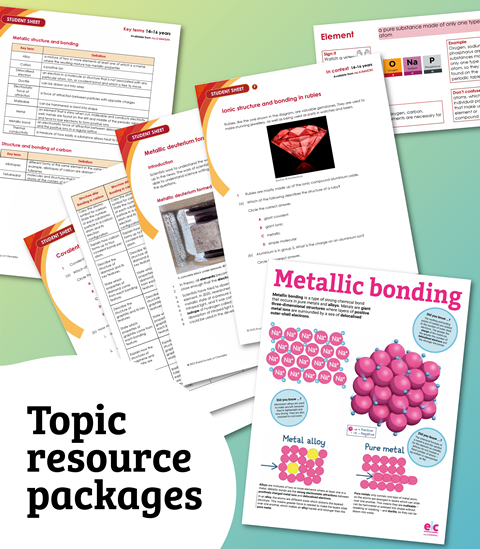All Atoms and bonds articles – Page 10
-
 Soundbite
SoundbiteTubes and wet concrete don’t mix
Nina Notman ponders chemistry’s role in drying out the Victoria line after a concrete flood
-

-
 Resource
ResourceChemTube3D: Organic Structure and Bonding
This site contains interactive 3D animations for some of the most important organic reactions and structures covered during an undergraduate degree.
-
 Resource
ResourceOn This Day - Oct 31 : Robert Mulliken died
He was awarded the 1966 Nobel Prize in Chemistry for his work on chemical bonds and describing the electronic structure of molecules using the molecular orbital method. His research still leads this field.
-
 Resource
ResourceStructure and Bonding
Knowledge of structure and bonding can help explain the properties of materials. All the properties of a particular substance depend upon the elements present and how they are bonded to each other. This programme is designed to develop students understanding of structure and bonding as well as developing thinking ...
-

-

-
 Soundbite
SoundbiteXenon dioxide
Simon Cotton takes a look at those compounds that find themselves in the news or relate to our everyday lives.
-
 Feature
FeatureChemical Bonding
A masterclass in teaching the topic of bonding, basing chemical explanation on physical forces
-
 Exhibition chemistry
Exhibition chemistryNitrogen triiodide - a sensitive, contact explosive
Create a beautiful cloud of vapour mixed and gas with this safe contact explosive demonstration
-
 The Mole
The MoleHot particles: could you blow up the Vatican with antimatter?
On screen chemistry with Jonathan Hare
-
 Feature
FeatureInvestigating Crystal Structures
Sixthformers are introduced to Madelung constants as a way of investigating ionic crystal structures
-
 Lesson plan
Lesson planAtoms and atomic structure: a ‘similar and different’ activity | 16-18 years
Help students consolidate their ideas about atoms and atomic structure, working in pairs to identify key concepts, using this lesson plan for 16–18 year olds.
-
 Lesson plan
Lesson planLinking structure, bonding and substance properties | 16-18 years
Check students’ understanding of how properties of substances depend on their structure and bonding using this lesson plan with activities for 16–18 year olds.
-
 Lesson plan
Lesson planAtoms: size, scale and nanoscience | 14-16 years
Explore the scale and size of atoms and their relation to elements, introducing students to nanoscience in this lesson plan with activities for 14–16 year olds.
-
 Lesson plan
Lesson planPlastics and polymers: their structure and properties | 16-18 years
Explore how the properties of polymers depend on their structure and different types of intermolecular bonds using this lesson plan for 16–18 year olds.
-
 Lesson plan
Lesson planWhat is stuff made of? Matter, atoms and elements | 11-14 years
Introduce the properties and behaviour of atoms as the smallest parts of elements and a basic unit of matter using this lesson plan for 11–14 year olds.
-
 Lesson plan
Lesson planParticle models: gas, liquid, solid | 11-14 years
Help your students develop their understanding of gases, liquids and solids using the particle model in this lesson plan with activities for 11–14 year olds.
-
 Lesson plan
Lesson planUnderstanding the structure of atoms | 14–16 years
Check your learners’ understanding of atomic structure using self assessment in this lesson plan with activities
-
 Lesson plan
Lesson planWhat are hydrogen bonds? | 16-18 years
Help students explore hydrogen bonding and discover where hydrogen bonds are found using this lesson plan with activities for 16–18 year olds.











